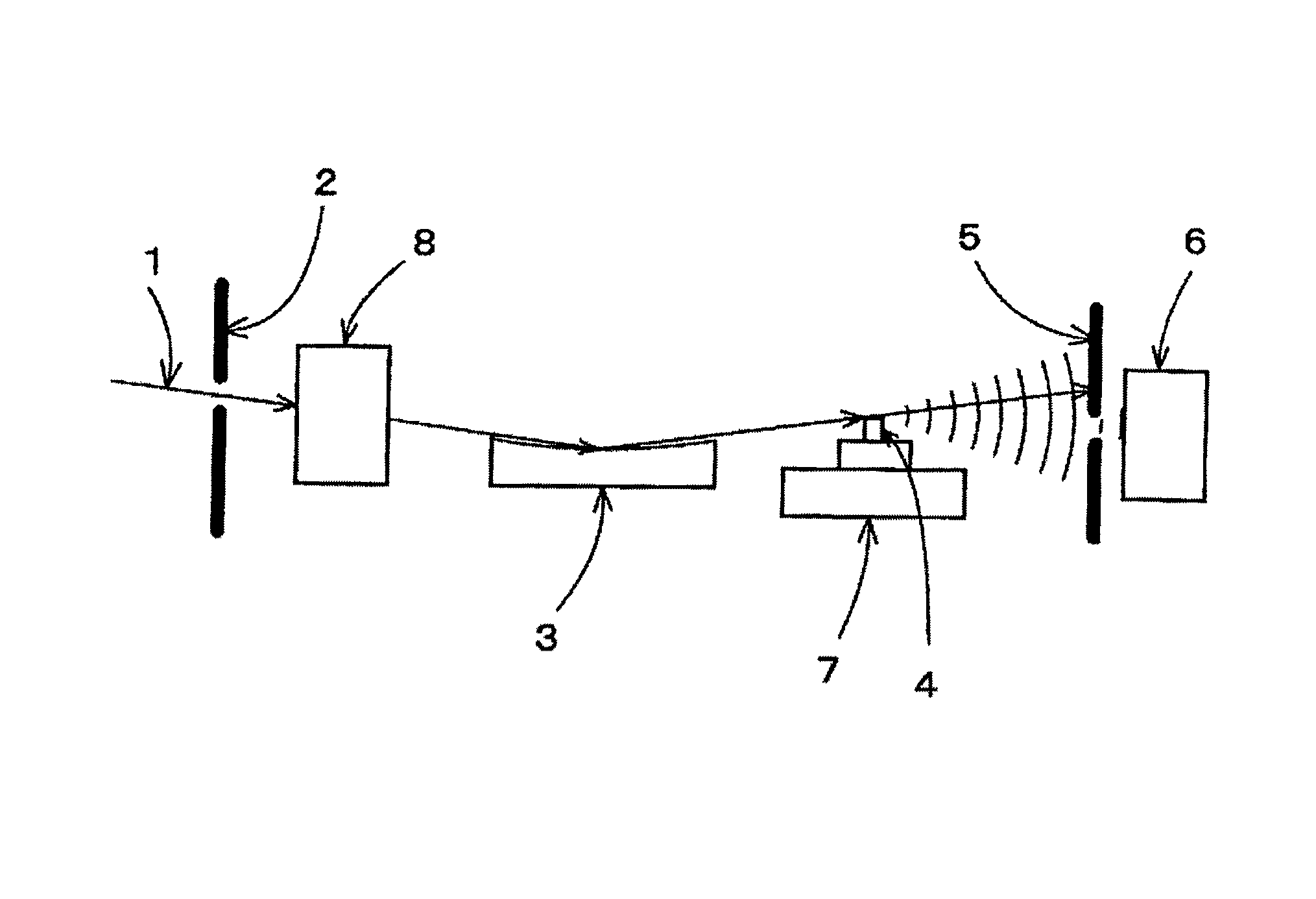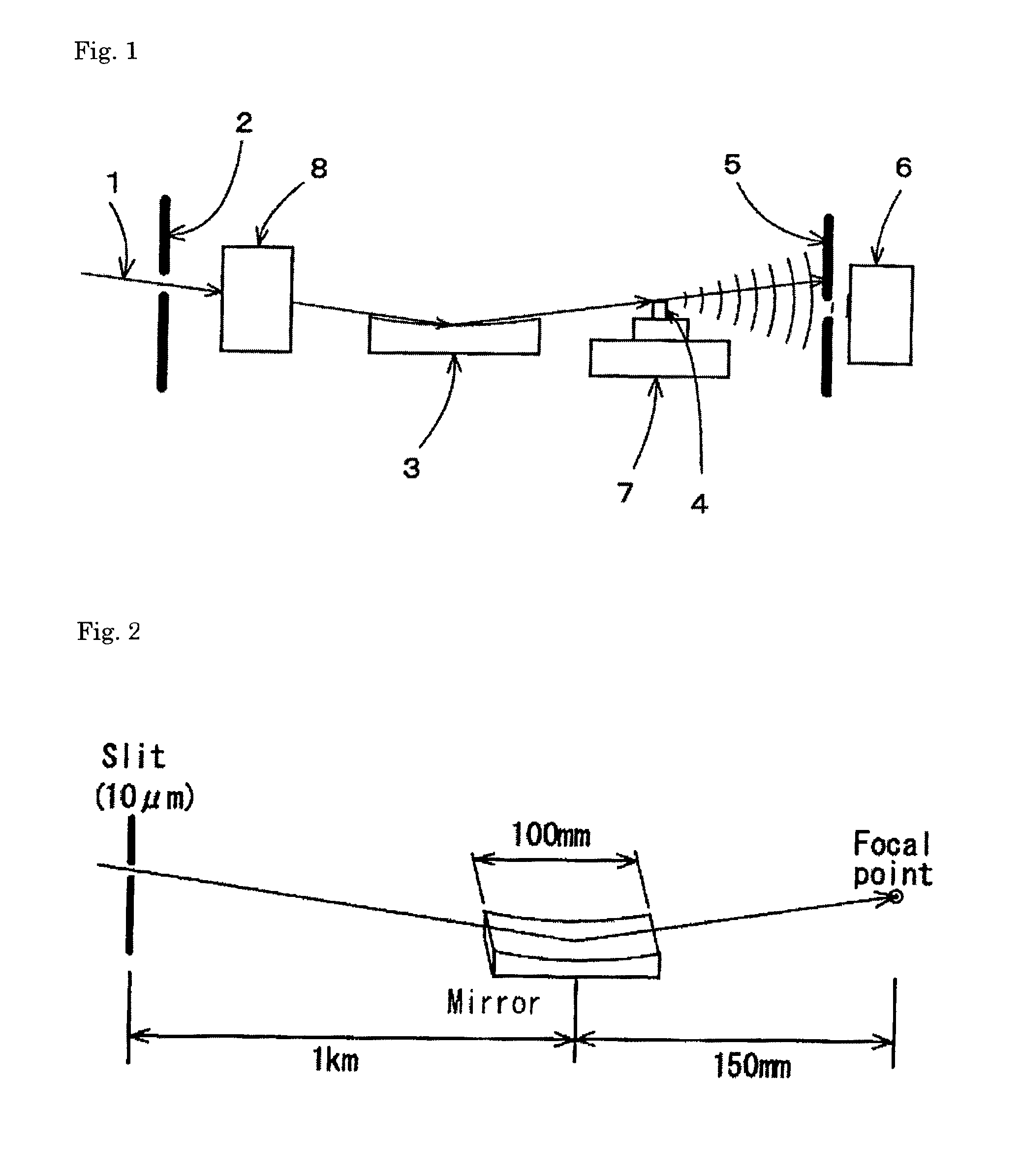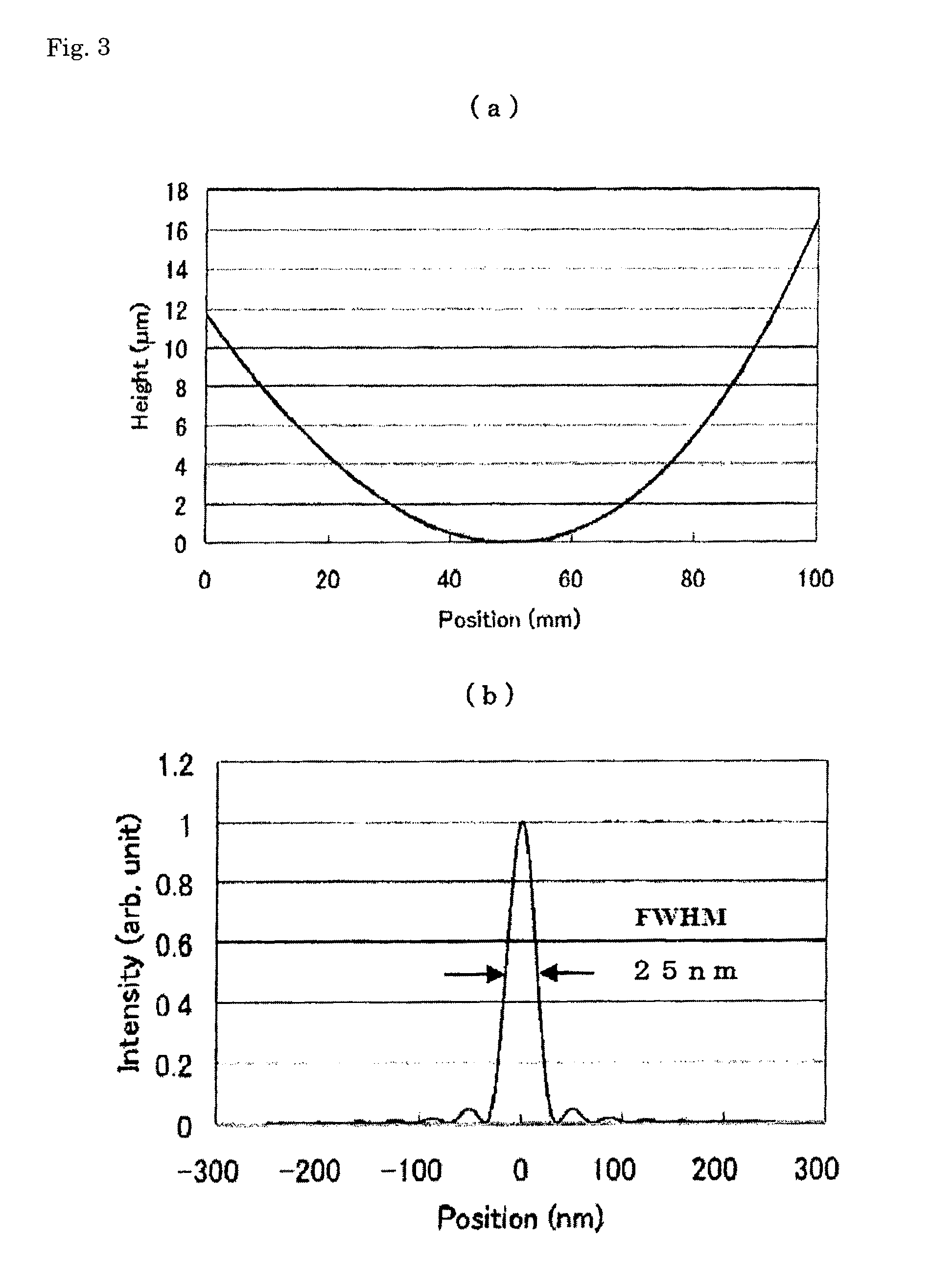Method and apparatus of precisely measuring intensity profile of X-ray nanobeam
a technology of intensity distribution and intensity measurement, which is applied in the direction of instruments, imaging devices, nuclear engineering, etc., can solve the problems of difficult to determine the phase error of the surface of the x-ray mirror, difficult to prepare the geometrically sharp knife edge, and enhance the noise generated at intensity measurement, so as to achieve low background noise and enhance the signal level , the effect of increasing the s/n ratio
- Summary
- Abstract
- Description
- Claims
- Application Information
AI Technical Summary
Benefits of technology
Problems solved by technology
Method used
Image
Examples
Embodiment Construction
[0035]The present invention will be described in more detail with reference to the attached drawings. FIG. 1 is a general arrangement diagram of a measurement optical system using a method for precise measurement of an X-ray nanobeam intensity distribution, and FIG. 2 shows an X-ray beam collection optical system used for measurement.
[0036]In this embodiment, as shown in FIG. 1, an incident X-ray 1 passes through a slit 2 and obliquely enters into an X-ray mirror 3 having an oval form where the incident X-ray 1 is subjected to one-dimensional light collection. In addition, a knife edge 4 is disposed on an X-ray beam focal plane and a slit 5 is arranged behind the knife edge 4 to shut off a direct X-ray beam, and an X-ray intensity is measured by an X-ray detector 6 that is disposed behind the knife edge 4 at a position geometrically dark with respect to an X-ray source. The knife edge 4 is held by a moving stage 7, and the moving stage 7 is driven to run the knife edge 4 so as to cu...
PUM
| Property | Measurement | Unit |
|---|---|---|
| thickness | aaaaa | aaaaa |
| inclination angle | aaaaa | aaaaa |
| thickness | aaaaa | aaaaa |
Abstract
Description
Claims
Application Information
 Login to View More
Login to View More - R&D
- Intellectual Property
- Life Sciences
- Materials
- Tech Scout
- Unparalleled Data Quality
- Higher Quality Content
- 60% Fewer Hallucinations
Browse by: Latest US Patents, China's latest patents, Technical Efficacy Thesaurus, Application Domain, Technology Topic, Popular Technical Reports.
© 2025 PatSnap. All rights reserved.Legal|Privacy policy|Modern Slavery Act Transparency Statement|Sitemap|About US| Contact US: help@patsnap.com



